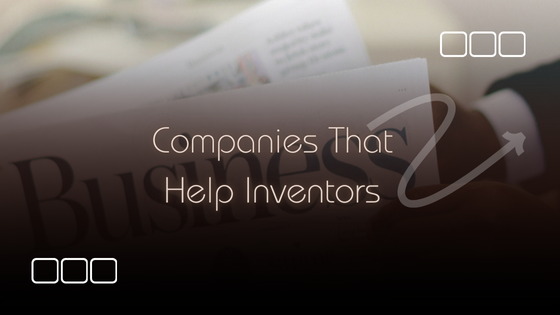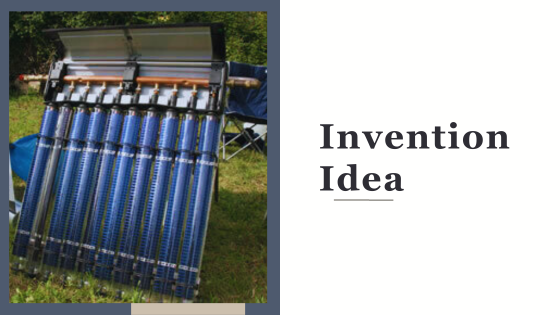Harnessing Feedback from CES and the Inspired Home Show to Refine Product Designs for InventHelp Clients
Participating in major trade shows like CES and the Inspired Home Show provides inventors with invaluable opportunities to gather feedback directly from industry leaders, potential customers, and even competitors. For clients working with InventHelp, this feedback is crucial in refining product designs to ensure market readiness and success.
The Importance of Real-World Feedback
When inventors bring their products to CES (Consumer Electronics Show) and the Inspired Home Show, they are exposed to a broad spectrum of reactions and insights. This real-world feedback is a critical component of the product development process, helping to identify strengths, weaknesses, and areas for improvement.
Benefits of Gathering Feedback:
Validates Concepts: Positive responses can confirm that the product meets a market need.
Identifies Weak Points: Constructive criticism reveals potential flaws or areas that require enhancement.
Guides Adjustments: Insights from industry experts and end-users guide refinements, ensuring the product aligns with market demands.
Leveraging Feedback from CES
CES is a premier event that attracts technology enthusiasts, industry experts, and media from around the globe. For InventHelp clients, feedback from such an esteemed audience is particularly valuable.
Key Ways Feedback Helps Refinement at CES:
Technological Validation: Attendees at CES include tech-savvy individuals who can provide expert opinions on the feasibility and functionality of a product’s technology. Technological
Validation: Attendees at CES include tech-savvy individuals who can provide expert opinions on the feasibility and functionality of a product’s technology. Their feedback helps in validating the technical aspects and identifying potential technical challenges, particularly for the best types of inventions at CES.
User Experience Insights: By observing how users interact with their products in real-time, inventors can gain insights into user behaviors and preferences, highlighting any issues that might hinder user experience.
Market Readiness Gauge: Responses from potential buyers and industry stakeholders offer a gauge of the product’s readiness for market. Inputs like pricing expectations, feature preferences, and usability concerns are crucial for making informed adjustments.

Feedback from the Inspired Home Show
The Inspired Home Show is focused on housewares and home goods, drawing a specialized audience that includes retailers, distributors, and enthusiasts. The feedback from this niche market can be instrumental in refining home-focused products, especially when considering the best types of inventions for household use.
Importance of Feedback at the Inspired Home Show:
Functional Feedback: Attendees provide practical insights on the functionality and usability of home products. This type of feedback is critical in making design adjustments that enhance the product’s practical application in everyday life.
Aesthetic Preferences: Feedback regarding design aesthetics helps inventors understand consumer preferences for design, color, and style, ensuring that the product appeals visually to the target audience.
Packaging and Presentation: The way a product is presented and packaged can significantly impact its market success. Feedback from retailers and distributors helps in refining packaging designs to improve shelf appeal and consumer interest.
Implementing Feedback: InventHelp’s Role
InventHelp invention company supports its clients in systematically collecting, analyzing, and implementing feedback from these trade shows. The following steps outline how feedback is integrated into the product refinement process:
Collecting Feedback: Detailed notes are taken during interactions with attendees. Surveys and feedback forms are also utilized to gather structured responses.
Analyzing Responses: Feedback is analyzed to identify common themes and critical areas for improvement. This may involve categorizing feedback into various aspects of the product such as design, functionality, and market positioning.
Design Adjustments: Based on the analysis, specific design changes are planned and executed. This could include technical tweaks, aesthetic modifications, or usability enhancements.
Prototyping New Iterations: Updated prototypes reflecting the implemented feedback are developed and tested internally before being re-presented to potential stakeholders.
Continuous Improvement: The iterative nature of this process ensures that each round of feedback leads to a progressively improved product, increasing the likelihood of market success.
Conclusion
For InventHelp clients, the feedback obtained from CES and the Inspired Home Show is indispensable. Not only does it validate their concepts, but it also provides actionable insights that drive product enhancements. By strategically collecting and implementing this feedback, inventors are better equipped to refine their product designs, ensuring they meet market expectations and stand out in competitive landscapes. This collaborative approach between InventHelp and its clients ultimately leads to more polished, market-ready products that have a higher chance of achieving commercial success.








